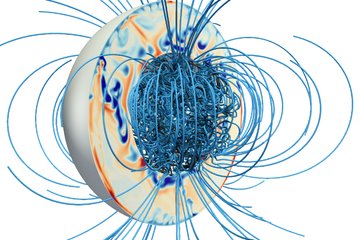All genres
21.
Journal Article
Gas outflow and dust transport of comet 67P/Churyumov-Gerasimenko. Mon. Not. Roy. Astron. Soc. 462, pp. S533 - S546 (2016)
22.
Journal Article
Geomorphological mapping of comet 67P/Churyumov-Gerasimenko's Southern hemisphere. Mon. Not. Roy. Astron. Soc. 462, pp. S573 - S592 (2016)
23.
Journal Article
Comparative study of water ice exposures on cometary nuclei using multispectral imaging data. Mon. Not. Roy. Astron. Soc. 462, pp. S394 - S414 (2016)
24.
Journal Article
Variegation of comet 67P/Churyumov-Gerasimenko in regions showing activity. Astronomy and Astrophysics 586, A80 (2016)
25.
Journal Article
The southern hemisphere of 67P/Churyumov-Gerasimenko: Analysis of the preperihelion size-frequency distribution of boulders >= 7m. Astronomy and Astrophysics 592, L2 (2016)
26.
Journal Article
The Agilkia boulders/pebbles size-frequency distributions: OSIRIS and ROLIS joint observations of 67P surface. Mon. Not. Roy. Astron. Soc. 462, pp. S242 - S252 (2016)
27.
Journal Article
Sunset jets observed on comet 67P/Churyumov-Gerasimenko sustained by subsurface thermal lag. Astronomy and Astrophysics 586, A7 (2016)
28.
Journal Article
Summer fireworks on comet 67P. Mon. Not. Roy. Astron. Soc. 462, pp. S184 - S194 (2016)
29.
Journal Article
Are fractured cliffs the source of cometary dust jets ? Insights from OSIRIS/Rosetta at 67P. Astronomy and Astrophysics 587, A14 (2016)
30.
Journal Article
Fractures on comet 67P/Churyumov-Gerasimenko observed by Rosetta/OSIRIS. Geophysical Research Letters 42 (13), pp. 5170 - 5178 (2015)
31.
Journal Article
Scientific assessment of the quality of OSIRIS images. Astronomy and Astrophysics 583, A46 (2015)
32.
Talk
Material strength on 67P/Churyumov-Gerasimenko and its influence on cliff stability. European Geosciences Union General Assembly, Vienna, Austria (2017)
33.
Talk
Zum Greifen nah! Rosettas Reise durch das Sonnensystem. Weihnachtsfeier des DVS Goslar, Goslar, Germany (2016)
34.
Talk
Rosetta: Das Abenteuer geht weiter. Öffentlicher Vortrag im Rahmen der 125-Jahr Feier des Felix-Klein-Gymnasiums, Göttingen, Germany (2015)
35.
Talk
Material strength of cliffs and boulders on 67P/Churyumov-Gerasimenko. European Planetary Science Congress, Nantes, France (2015)
36.
Talk
Rosetta: Das Abenteuer geht weiter. Rosetta and Philae Lander Event, Göttingen, Germany (2014)
37.
Talk
Small-scale impacts as a trigger for an avalanche in a low-gravity environment. Asteroids, Comets Meteors Conference, Helsinki, Finland (2014)
38.
Poster
Small scale impacts as trigger for an avalanche in a low gravity environment. Granular Matter in Low Gravity, Erlangen, Germany (2015)
39.
Poster
Small Scale Impacts as trigger for an avalanche in a low gravity environment. European Geosciences Union General Assembly 2014, Vienna, Austria (2014)
40.
Thesis - PhD
Dynamics of granular material on small bodies. Dissertation, Tech. Univ. Braunschweig, Braunschweig (2014)











